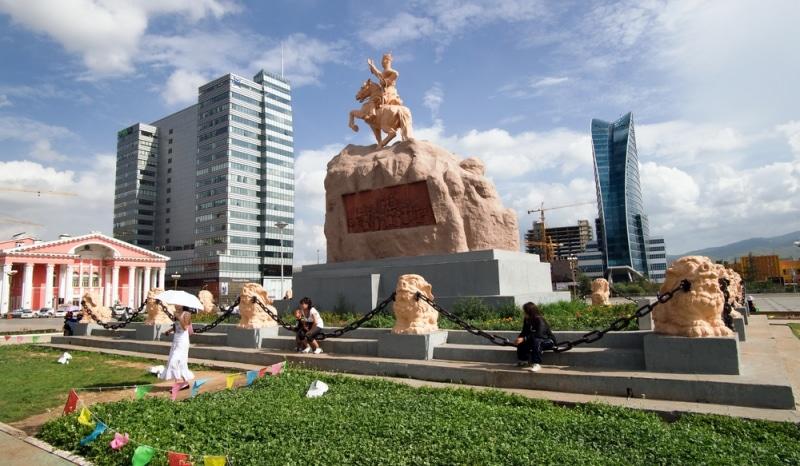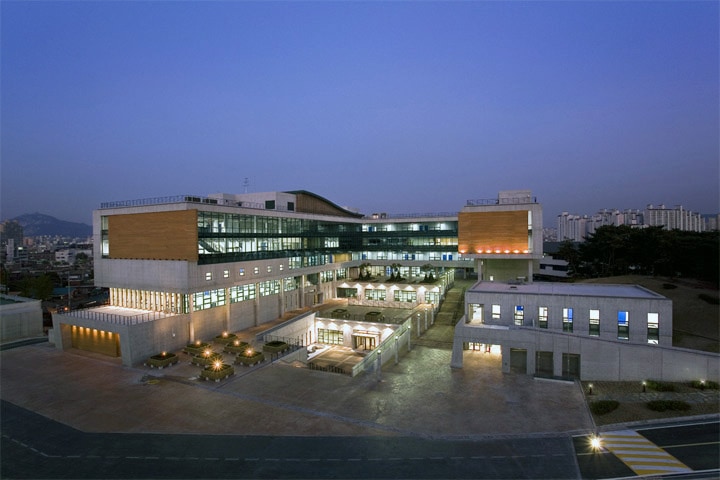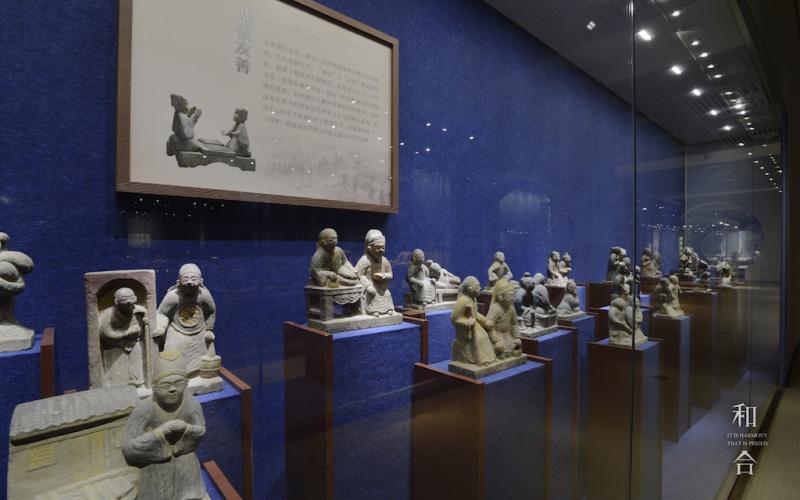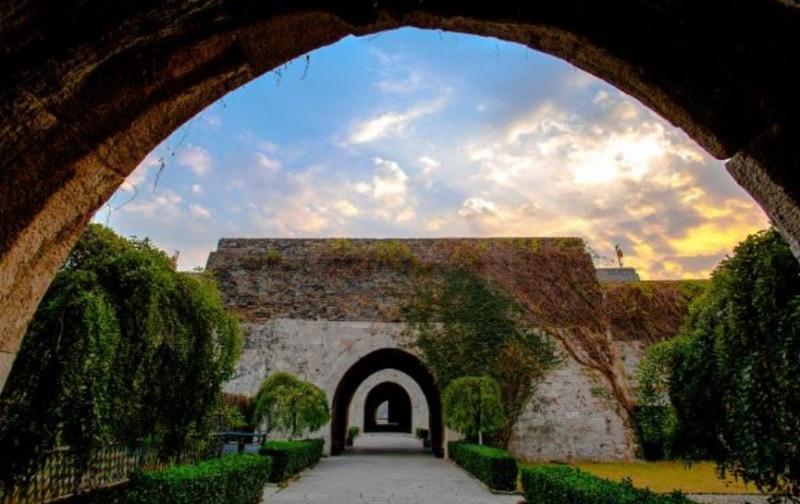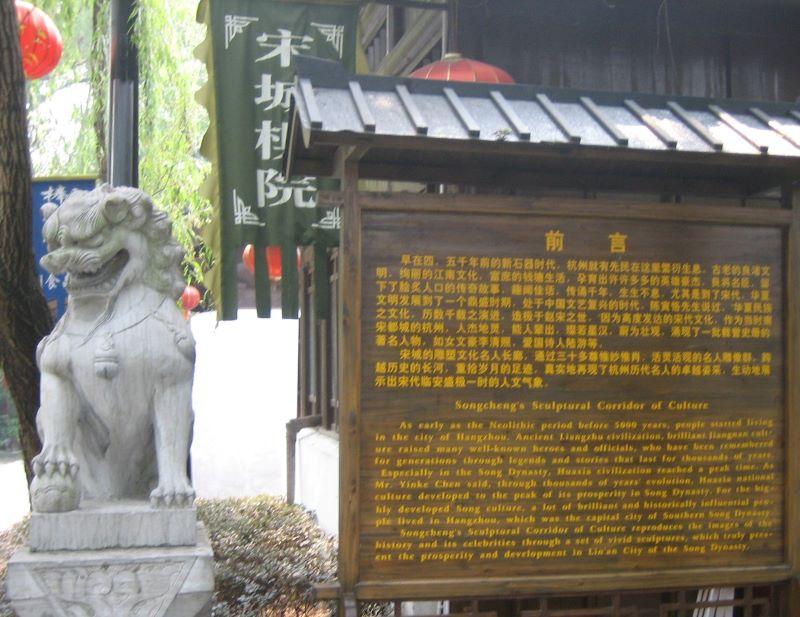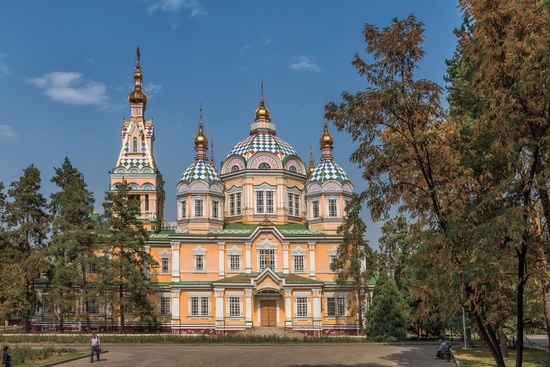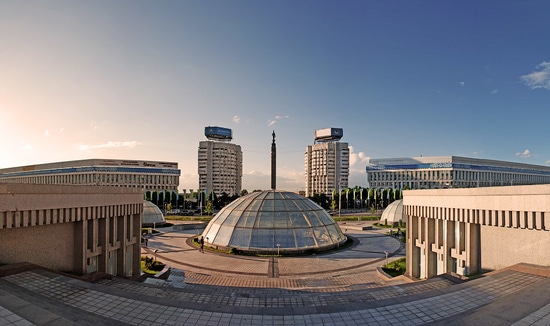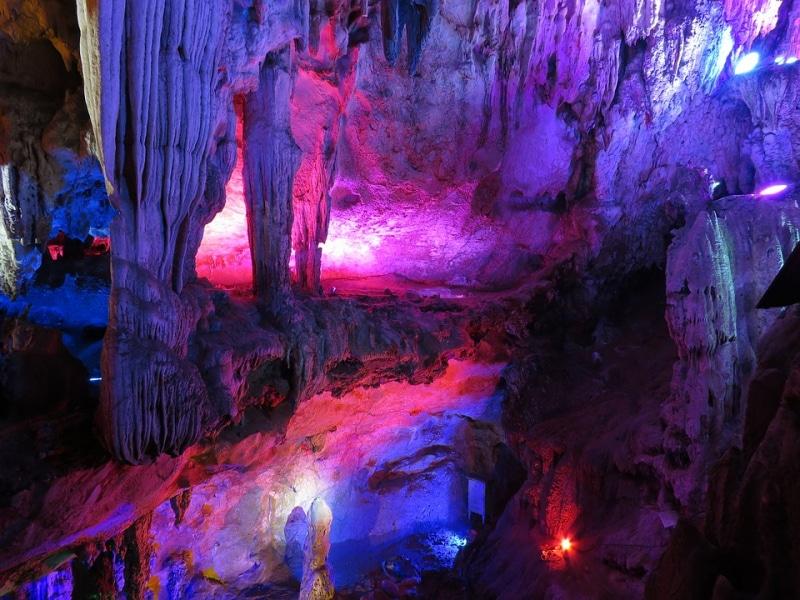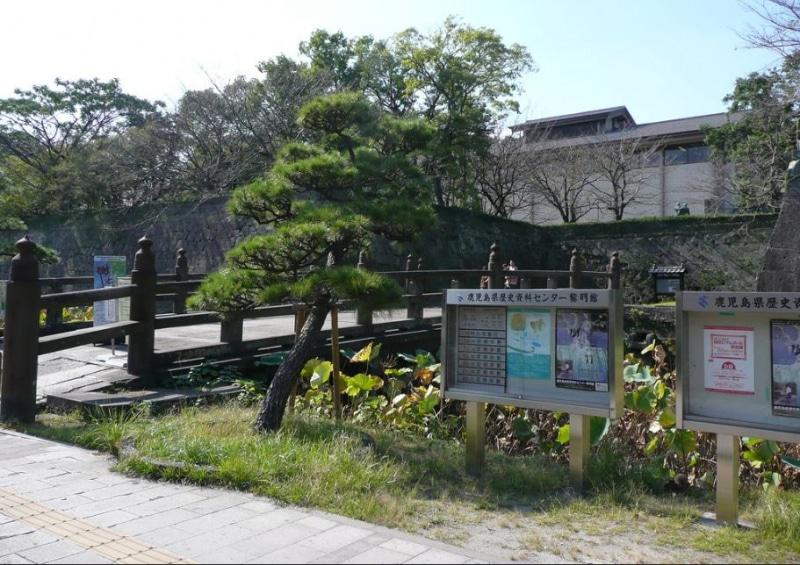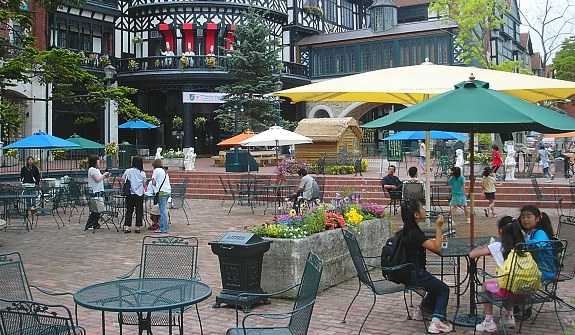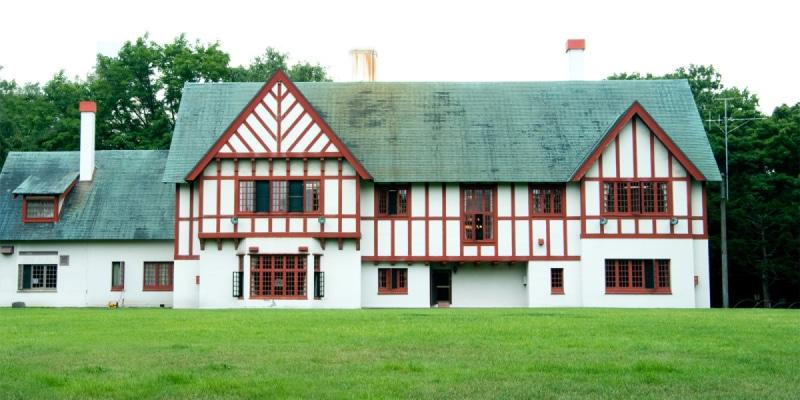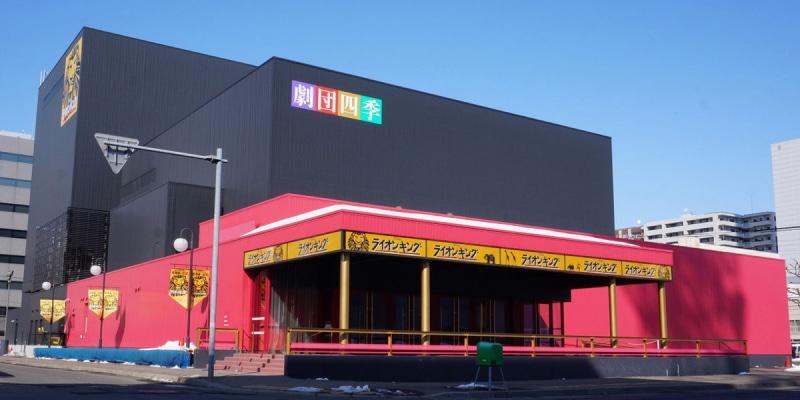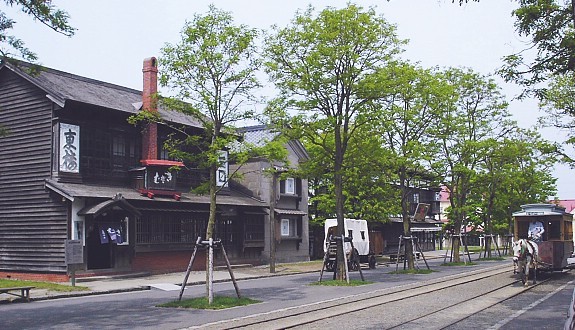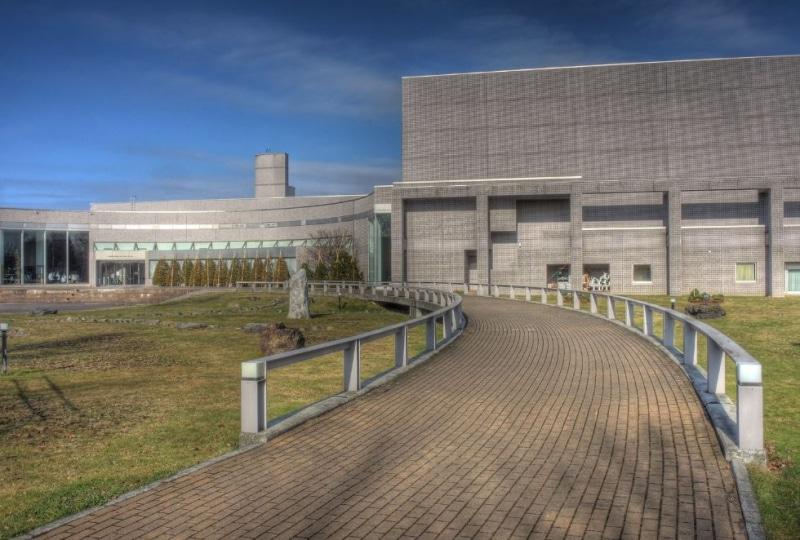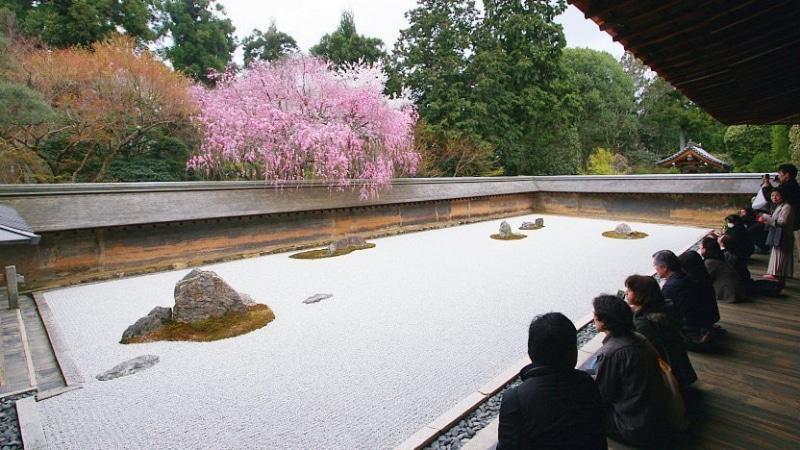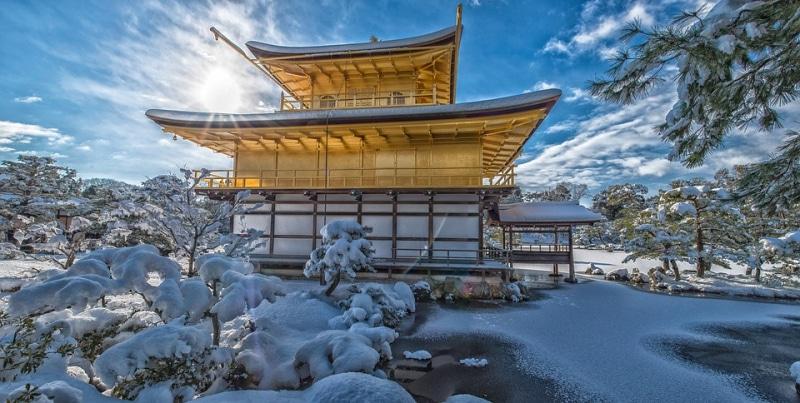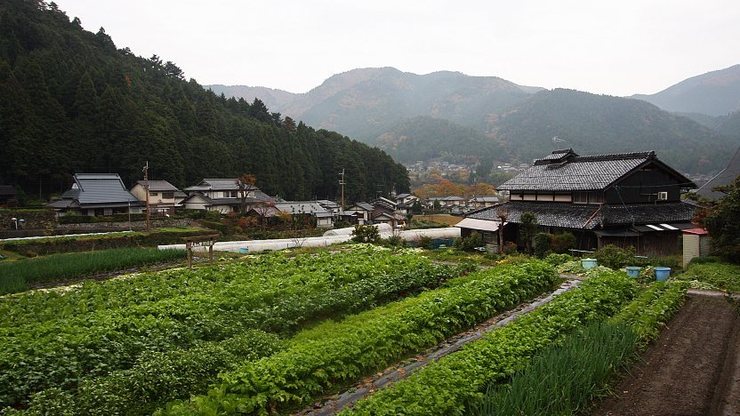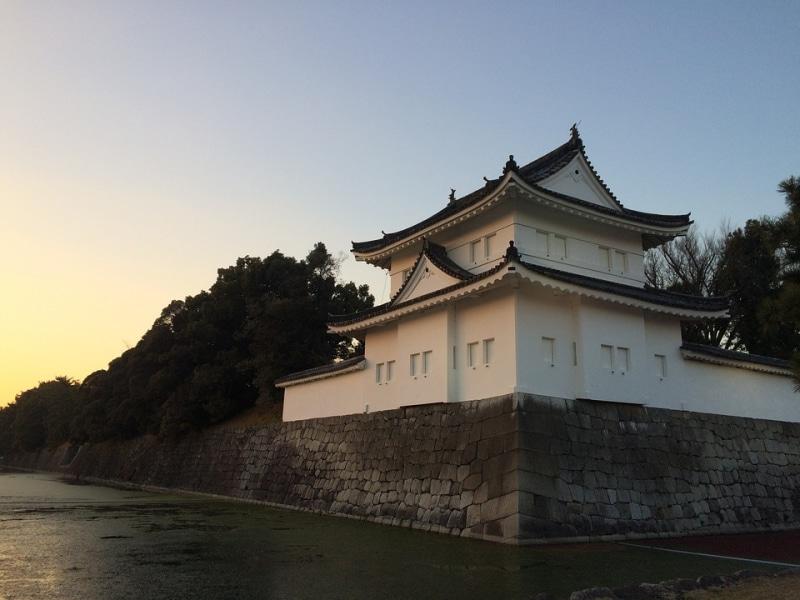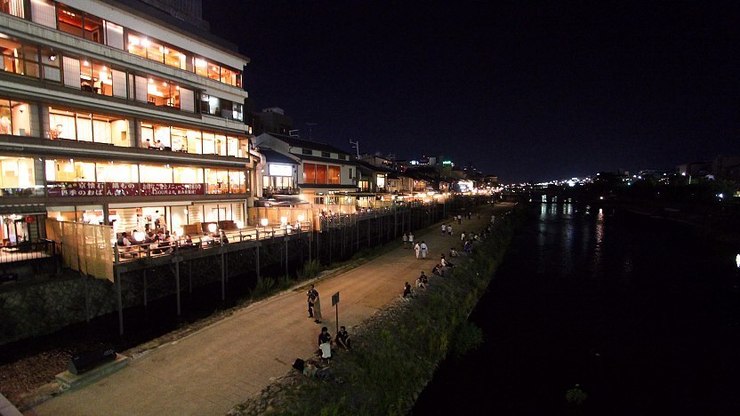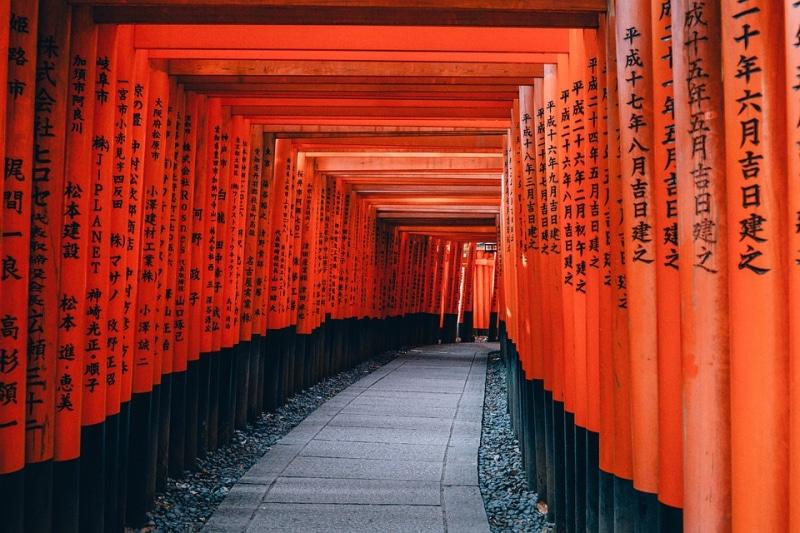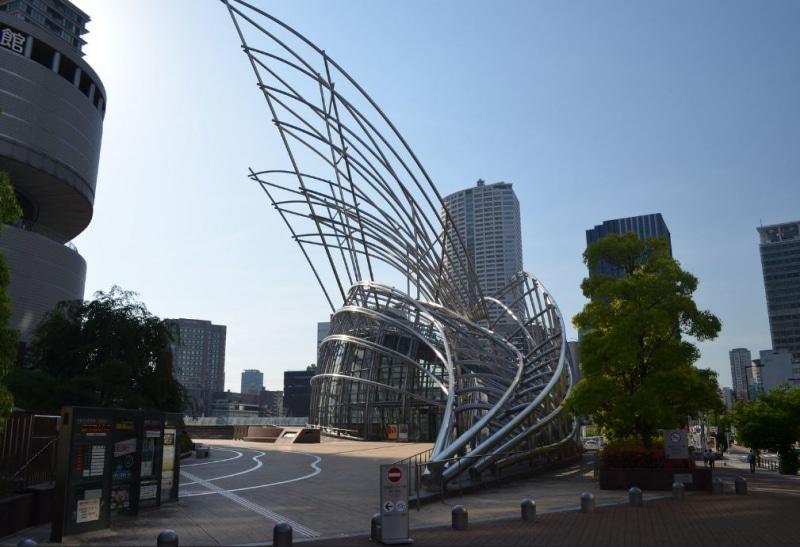ArtandCulture, Ulaanbaatar
Removed from Unnamed collection
Mongolian Natural History Museum
This is one of the oldest museums which was founded in 1924 as the National Central Museum. In 1956 it was renamed the State Central Museum and in 1997 it became the Museum of Natural History.
Today there are departments of Geography, Geology, Flora and Fauna, and Paleontology in the museum. Displays of stuffed and embalmed animals including the rare Gobi bear and wild camel, birds, and fish will give you a good idea about the rich fauna of Mongolia.
Most impressive is the Paleontology section. There are petrified eggs and bones of many dinosaurs that lived in the Gobi desert 60-70 million years ago and two complete skeletons of the flesh-eating giant Tarbosaurus and the duck-billed Saurolophus.
Petrified bones of 5 kinds of dinosaurs out of 7 that are known today have been discovered in Mongolia. The museum also has samples of various minerals that are found in the country. https://www.discovermongolia.mn/about-mongolia/destinations/ulaanbaatar-capital-city/natural-history-museum
Map
Removed from Unnamed collection
Sukhbaatar Square
This is the main square in the heart of Ulaanbaatar. A large statue of Sukhbaatar, the famous patriot characterizes the square, and the square is named after this historic figure. Such important buildings as the Parliament House, Stock Exchange, the Drama Theater and Cultural Palace are located surrounding the square.
Sukhbaatar square was formed in the early part of the XIX century by the name of the Great Universe. The northern edge of the Great Pleasure was the Yellow Castle (south of the existing Child Center Center), the southern edge of the Choijin Lama Temple, the left and right sides of the monastery, and the lords.
The design of the monument D. Sukhbaatar's statue was created by sculptor Ch. Boghola. The draft of the statue, depicted on the cliffs of the jujube, is on February 23, 1946, by the Council of Ministers and the Central Committee of the MPRP 13/3. According to the decree, the statue was built shortly in the centre of the Indians and opened on the 8th of July 1946 on the 25th anniversary of the People's Revolution. Since then, Indra Square was renamed Sukhbaatar square.
The four-meter tall statue of granite, made of granite, was set at a height of 12 meters above the base of a sunny, high-rise staircase. On the sides of the concrete roof, the revolutionary event is emblazoned on the left side: "Our country unites unity and unites a single force, united where there is no place to go, and no one can know and can not find pleasure in pleasure. we have the courage to know our hearts. " The 14 statues of white lions connected to the outside of the statue were symbolically placed on the exterior of the statue of the 14 white lions. https://www.discovermongolia.mn/about-mongolia/destinations/ulaanbaatar-capital-city/sukhbaatar-square
Map
Explore more places related to this search:
Removed from Unnamed collection
Seoul Museum of History
The Seoul Museum of History is the only museum in Korea that represents the city’s history and culture. Since its establishment on the former site of Gyeonghuigung Palace in 2002, the museum has offered visitors the chance to experience 600 years of Seoul’s history and culture through interactive exhibitions. The three-story museum is divided thematically into three exhibition areas, including a special exhibition area, a permanent exhibition area and a hall that exhibits collections donated by the public.
The museum offers accessible and interactive exhibitions to the public with various hands-on programs. For example, visitors are allowed to touch and explore the exhibits on display, which are replicas of originals in the museum. In addition, the museum offers the U-Exhibit Guidance System, an automatic translator (various languages are available) for visitors, which makes every tour convenient and interesting. http://english.visitseoul.net/attractions/The-Seoul-Museum-of-History_/2725
Map
Removed from Unnamed collection
National Center for Korean Traditional Performing Arts
The National Center for Korean Traditional Performing Arts is a national music agency that has been established to transmit and develop traditional music and dance. It is conducting various activities related to gukak performances and gukak itself. http://english.seoul.go.kr/life-information/culture/culture-facility/1-theater/
Map
Removed from Unnamed collection
Nanjing Museum
Discover everything from ancient civilizations to the early days of the Republic in exhibitions, displays and performances. Being one of the first museums to be established in China, it is also one of the largest. http://www.cityofnanjing.com/article/nanjing-museum/
Map
Removed from Unnamed collection
The Ming Great Wall of Nanjing
Going back to the 14th century this historic landmark is a symbol of Nanjing’s time as the capital of the Ming Dynasty between 1368 and 1421.
Founder of the Ming Dynasty Emperor Zhu Yuanzhang ordered its building to protect Nanjing from invaders.
Purple Mountain, Xuanwu Lake and Qinhuai River provided additional natural defences as the Wall snaked around them. The curved Wall was unusual, as up until then city walls had been built in straight lines. Completed in 1386, Nanjing is one of the few cities to retain its original walls. Making the state-protected Ming Great Wall a national treasure.
The Ming Great Wall was 35 kilometres long. It was considered to be one of the longest city walls in the world. Today about 25 kilometres are still intact with the following six sections being opened to the public:
Zhonghua Men (Treasure Gate) to Shen Ce Men Gate (Peace Gate). It is approximately 6 kilometres long.
Zhong Shan Gate (Zhong Shan Men) to Guanghua East Street (Guang Hua Dong Jie), it is approximately 2 kilometres.
East Water Gate (Dong Shui Guan) to West Water Gate (Xi Shui Guan), it is approximately 6 kilometres.
Qing Ling Mountain (Qing Ling Shan) to Defense Garden (Guo Fang Yuan), it is approximately 1 kilometre.
Ding Huai Gate (Ding Huai Men) to Lion Mountain (Shi Zi Shan), it is approximately 4 kilometres.
Zhong Fu Road (Zhong Fu Lu) to Zhong Yang Gate (Zhong Yang Men), it is approximately 2 kilometres. http://www.cityofnanjing.com/article/the-ming-great-wall-of-nanjing/
Map
Removed from Unnamed collection
Shanghai Postal Museum
One of the rare free museums in town, the original Shanghai Postal Museum in Hongkou well explains the history of the postal service in China. Venture up to the beautiful baroque rooftop to find a sculpted garden with a Romanesque clock tower and one of the city’s best low-level views: looking west up Suzhou Creek and east towards the Pudong skyline with the Art Deco Broadway Mansions in front. http://www.timeoutshanghai.com/venue/Around_Town-Museums-_Around_Town-Parks__Gardens/995/Shanghai-Postal-Museum.html
Map
Removed from Unnamed collection
Shanghai Grand Theatre
The spectacular ten-storey Shanghai Grand Theatre showcases a variety of musical, dance and dramatic acts under it's instantly recognisable curved roof in People’s Square. The theatre itself is divided into three separate auditoriums, the largest of which, The Lyric Theatre is home to ballet performances such as Swan Lake, orchestral concerts and traditional Peking opera from the China National Peking Opera Company. The box office is open from 9am-7pm daily, see schedule for opening times of individual shows. http://www.timeoutshanghai.com/venue/Theatres/830/Shanghai-Grand-Theatre.html
Map
Removed from Unnamed collection
Sanshan Guildhall
Hang out in the old haunt of Fujian fruit merchants at the Sanshan Guildhall – one of many guildhalls to pop-up in the city for traders to seek camaraderie. Though it’s been shifted 30 metres south from its original position, this relatively late addition (built in 1909) is also the only well-preserved guildhall from the Qing dynasty and currently serves as a museum. 1551 Zhongshan Nan Lu, Bansongyuan Lu. http://www.timeoutshanghai.com/features/Things_to_Do-Around_Town/44571/9-places-to-see-Shanghai-through-the-ages.html
Map
Removed from Unnamed collection
Songcheng
Song Dynasty Town (Songcheng) is the largest theme park in Hangzhou, featuring the cultural characteristics of the Song Dynasty (960 - 1279 AD), and also the first theme park built in Zhejiang. With Wuyun Mountain in the north and West Lake to its northeast, Song Dynasty Town is on the northern bank of the Qiantang River. Its layout and architectural style are based on a precious ancient painting, 'Along the River During the Qingming Festival', which was made by famous painter Zhang Zeduan, displaying the urban landscape and people's living condition of that dynasty.
The theme park is divided into three fields, Performing Songcheng, High-tech Songcheng, and Cultural Songcheng. Performing Songcheng includes the Romance of the Song Dynasty and ten theme shows. High-tech Songcheng has many featured events, such as reproducing area of 'Along the River during the Qingming Festival', two distinguishing haunted houses, and a mysterious street. Using advanced technology, they are all very realistic and mysterious, giving visitors a totally different experience. Cultural Songcheng covers some folk activities, such as traditional workshops, custom shows and Buddhist temples. https://www.travelchinaguide.com/attraction/zhejiang/hangzhou/song-dynasty-town.htm
Map
Removed from Unnamed collection
Ascension Cathedral
Also, known as the ‘Zenkov Cathedral’, Ascension Cathedral is one of the most beautiful, magnificent and architectural monument of the city of Almaty with the height of 56 meters and is located in the green Panfilov Park of Almaty. A. Zenkov had supervised the construction of this cathedral in the early 19th century and legend goes that it was built without a single nail. But unfortunately, it’s not true. Although the design is remarkably unique but it’s because of the advanced technological expertise of that time. They used the construction concept of Semi ruche which meant using of reinforced concrete, timber preservation and ventilation.
The Ascension Cathedral is entirely built in wood with intricate detailing and connected with iron bolts. The chief architect Zenkov ensured that it had a ‘flexible construction’. The external view of the cathedral boasts of some bright walls and multi coloured domes which is similar to the architecture of St. Petersburg. After many ups and downs in the restoration and religious upheavals, orthodox services began again in the cathedral and ever since it’s a pilgrimage for many Christians and a colourful attraction for all the Non-Christians. http://www.welovealmaty.com/ascension-cathedral.html
Map
Removed from Unnamed collection
Central State Museum of the Republic of Kazakhstan
The history of Kazakhstan from prehistoric times to the present day is collected within the walls of this museum. Mammoth skeletons, national costumes and horse harness, guns from the Second World War - each exhibit in the museum has its own special history and is ready to open it to grateful listeners with the help of experienced guides. You may find over 300 thousand items in the collection of the fund.
The area of the Museum building is about 20 thousand square meters, while the spectator-accessible exhibition part is only 7000 sq. m. This museum is the most visited in the Republic. Every year it is visited by 130 thousand people, the museum's directorate holds about 100 lectures on various topics a year, holds more than 30 exhibitions, special offers and cultural and educational programs. https://www.visitalmaty.kz/en/culture/central-state-museum-of-the-republic-of-kazakhstan
Map
Removed from Unnamed collection
Republic Square (New Square)
A beautiful and open place to enjoy the culture of Almaty: The Republic Square in Almaty is the home to the Akimat House, the Monument of Independence, The Presidential Residence, The Foundation of the First President of the Republic of Kazakhstan. The Central State Museum of the Republic of Kazakhstan is right nearby. https://www.almaty-kazakhstan.net/attractions/entertainment/the-republic-square/
Map
Removed from Unnamed collection
Reed Flute Cave
The cave got its name from the verdant reeds growing outside it, with which people make flutes. Inside the cave is a spectacular world of various stalactites, stone pillars and rock formations created by carbonate deposition. Illuminated by colored lighting, the fantastic spectacle is found in many variations along this 240-meter-long cave. http://www.cnto.org/destination/guilin-2/attractions/
Map
Removed from Unnamed collection
Oita Prefectural Art Museum
The Oita Prefectural Art Museum is located on Japan’s island of Kyushu. The modern and contemporary Japanese art collection is impressive; however, the biggest highlight of the museum is its elaborate modern architecture designed by noted architect Shigeru Ban. https://www.museeum.com/museum/oita-prefectural-art-museum/
Map
Removed from Unnamed collection
Ohara Museum of Art
The symbol of the Kurashiki Bikan Historical Quarter, this private museum features Western works of art in an eye-catching building styled after a Greek temple. Based on Ohara Magosaburo’s collection of Western art, Ohara Museum of Art features a large collection of world-famous paintings and work such as one of El Greco’s “Annunciation” and Monet’s “Water Lilies.” The museum also features a pond with water lilies propagated from Monet’s residence. https://www.okayama-japan.jp/en/spot/901
Map
Removed from Unnamed collection
Bizen Osafune Japanese Sword Museum
Located in Osafune, a town that once flourished as a major produce of Japanese swords, the Bizen Osafune Japanese Sword Museum is one of a limited number of sword museums and features a variety of Japanese swords on display. Visitors can learn about the history and manufacturing process for Japanese swords as well as experience the beauty and power of the swords up close. The museum features several special exhibitions throughout the year that combine animations and video games, making this a popular destination for sword fans from across the country. In the adjacent workshop, visitors can see the skill of Japanese sword artisans, including the process where tamahagane, steel made from iron sand, is heated to 1300°C and then hammered to make a plate. https://www.okayama-japan.jp/en/spot/1073
Map
Removed from Unnamed collection
Reimeikan Museum
The Reimeikan Museum (黎明館) is dedicated to local history and culture. On three spacious floors, it presents a wide variety of exhibits that cover the span of Kagoshima's history from ancient to modern times. There are a few interesting models, such as a large diorama of downtown Kagoshima at the beginning of the Showa Period (1926-1989) and a small scale model of a village from the middle ages.
The museum was built on the former site of the local castle, known as Kagoshima or Tsurumaru Castle, and is surrounded by parts of the former moat and stone walls. The museum and castle ruins are located at the base of Mount Shiroyama, which literally means "castle mountain" in Japanese. https://www.japan-guide.com/e/e4606.html
Map
Removed from Unnamed collection
Shiroi Koibito Park
Shiroi Koibito Park is a theme park by Ishiya, a local chocolate company. The company's flagship product is the Shiroi Koibito cookie, which consists of two thin butter cookies and a layer of white chocolate in between. It is one of the most famous souvenirs from Hokkaido.
The park consists of a free area with a shop, cafe and restaurant and a paid area with various chocolate related exhibits and, most interestingly, a few large windows through which visitors can observe the cookie production process in the factory. It is also possible to create your own cookies in hands-on workshops. Another part of the Shiroi Koibito Park is a soccer field that serves as the practice ground for Consadole Sapporo, the local J-League soccer team. https://www.japan-guide.com/e/e5307.html
Map
Removed from Unnamed collection
Hokkaido Governor's Official Residence
Built in 1936 as a vacation home for Mitsui Partnership Company, this residence became Hokkaido’s property in 1953. It has since been used or various meetings and other functions. http://www.sapporo.travel/find/culture/governors_official_residence/?lang=en
Map
Removed from Unnamed collection
Sapporo Clock Tower
The Clock Tower (時計台, Tokeidai) is a symbol of Sapporo. The building was constructed during the early period of Sapporo's development in 1878 as a drill hall of the Sapporo Agricultural College. In 1881 a clock purchased from Boston was installed.
Today, the Clock Tower serves as a museum with displays about the building's history and Sapporo on the first floor. On the second floor are displays about the clock and a spacious ceremony hall that calls to mind the simple buildings of the colonial American Midwest. https://www.japan-guide.com/e/e5302.html
Map
Removed from Unnamed collection
The Hokkaido Shiki Theatre
The Hokkaido Shiki Theatre is used exclusively by Japan’s famous Shiki Theatre Company. It is famous for long-running musical the Lion King, which has exceeded over 10,000 performances, making it the most performed play in the history of Japan, as well as many other musicals that attract people of all ages including adults and children http://www.sapporo.travel/find/culture/hokkaido_shiki_theatre/?lang=en
Map
Removed from Unnamed collection
Historic Village of Hokkaido
The Historic Village of Hokkaido (開拓の村, Kaitaku no Mura) is an open air museum in the suburbs of Sapporo. It exhibits about 60 typical buildings from all over Hokkaido, dating from the Meiji and Taisho Periods (1868 to 1926), the era when Hokkaido's development was carried out on a large scale. There are four different sections: a town, fishing village, farm village and a mountain village. https://www.japan-guide.com/e/e5303.html
Map
Removed from Unnamed collection
Snow Crystal Museum
It's like being in a dream! Extraordinary experience!
The castle-like appearance of medieval Europe incorporates the elegant Byzantine architectural style everywhere, and the interior is all original design in the image of snow.
The Snow Museum was created with the image of Japan's most beautiful the snowflake that falls in the Daisetsuzan system from the building to the exhibition. The Snow Museum was built in May 1991 using the European Byzantine style. The appearance that uses curves such as dome and arch gives an elegant impression.
The Snow Museum is located on the hills of Asahikawa City, and the view that overlooks Mt. Daisetsu and the city and the appearance in harmony with the scenery of the four seasons
attract visitors. https://yukibi.marryblossom.com/yukibi/
Map
Removed from Unnamed collection
Hokkaidoritsu Asahikawa Bijutsukan (Art Museum)
Hokkaidoritsu Asahikawa Bijutsukan is located in Tokiwa Koen, a park in Asahikawa city in northern Hokkaido. A major feature of this museum is its extensive collection of artworks crafted from wood, reflecting its location in Asahikawa, a city whose encompassing forests have given rise to a flourishing woodworking industry based on furniture manufacturing. Many works by artists connected to this region are also housed in the museum. https://www.jnto.go.jp/eng/spot/museum/pbhokasahikawaart.html
Map
Removed from Unnamed collection
Asahikawa City Museum
Asahikawa City Museum displays the Ainu culture and abundant materials related to it in Hokkaido. With a large number of person models, It can reproduce in full of presence the state of traditional life of Ainu people. A realistic model exhibit emerging in a dark place is a dynamic and powerful full mark. Valuable materials of northern ethnic groups other than Ainu people are also exhibited. And, "Time Maze Yukinbo" which displays the appearance of the people's lives and children's play in the Showa 30s and 40' s after the war in Japan, mainly in Asahikawa, is also popular. https://en.visit-hokkaido.jp/spot/detail.php?id=406&lang=tw
Map
Removed from Unnamed collection
Ryoanji Temple
Ryoanji Temple (龍安寺, Ryōanji) is the site of Japan's most famous rock garden, which attracts hundreds of visitors every day. Originally an aristocrat's villa during the Heian Period, the site was converted into a Zen temple in 1450 and belongs to the Myoshinji school of the Rinzai sect of Zen Buddhism, whose head temple stands just a kilometer to the south.
As for the history of Ryoanji's famous rock garden, the facts are less certain. The garden's date of construction is unknown and there are a number of speculations regarding its designer. The garden consists of a rectangular plot of pebbles surrounded by low earthen walls, with 15 rocks laid out in small groups on patches of moss. An interesting feature of the garden's design is that from any vantage point at least one of the rocks is always hidden from the viewer. https://www.japan-guide.com/e/e3909.html
Map
Removed from Unnamed collection
Kinkakuji Temple
The image of the temple richly adorned in gold leaf reflects beautifully in the water of Kyokochi, the mirror pond.
It is perhaps the most widely-recognized image of Kyoto. Seen reflected in the adjoining "mirror pond" with its small islands of rock and pine, Kinkaku-ji Temple, "The Temple of the Golden Pavilion," is a breathtaking must-see.
The building's first purpose was to serve the retiring Shogun Ashikaga Yoshimitsu (1358-1409) as a residence. The gold-leaf-adorned building was converted into a Zen temple shortly after his death. In an event that was later fictionalized by the renowned author Yukio Mishima, a 21-year-old monk burned Kinkakuji down in 1950. The temple was rebuilt in 1955 and continues to function as a storehouse of sacred relics.
The temple's garden is also a scenic delight and contains in its grounds a charming teahouse. https://kyoto.travel/en/shrine_temple/165
Map
Removed from Unnamed collection
Ohara
Ohara (大原, Ōhara) is a rural town nestled in the mountains of northern Kyoto, about one hour from Kyoto Station, but still technically located within Kyoto's city limits. Ohara is best known for Sanzenin Temple and particularly popular in mid November during the autumn leaf season, which typically occurs about one week earlier than in central Kyoto. https://www.japan-guide.com/e/e3932.html
Map
Removed from Unnamed collection
Nijo Castle
Nijo Castle (二条城, Nijōjō) was built in 1603 as the Kyoto residence of Tokugawa Ieyasu, the first shogun of the Edo Period (1603-1867). His grandson Iemitsu completed the castle's palace buildings 23 years later and further expanded the castle by adding a five story castle keep.
Nijo Castle can be divided into three areas: the Honmaru (main circle of defense), the Ninomaru (secondary circle of defense) and some gardens that encircle the Honmaru and Ninomaru. The entire castle grounds and the Honmaru are surrounded by stone walls and moats.
Visitors to Nijo Castle enter the castle grounds through a large gate in the east. English audio guides are available for rent at a kiosk just inside the gate. Venturing further into the castle will bring you to the Chinese style Karamon Gate, the entrance to the Ninomaru (secondary circle of defense), where the castle's main attraction, the Ninomaru Palace is located. https://www.japan-guide.com/e/e3918.html
Map
Removed from Unnamed collection
Pontocho
Pontocho (先斗町, Pontochō) is one of Kyoto's most atmospheric dining areas. It is a narrow alley running from Shijo-dori to Sanjo-dori, one block west of Kamogawa River. The alley is packed with restaurants on both sides offering a wide range of dining options from inexpensive yakitori to traditional and modern Kyoto cuisine, foreign cuisine and highly exclusive establishments that require the right connections and a fat wallet.
Most of the restaurants along the eastern side of the alley overlook Kamogawa River. From May to September, many of them build temporary platforms over the flowing water where patrons can dine out in the open air. Known as kawayuka, this type of dining was developed as a way to beat the summer heat and is a great way to try some traditional Kyoto cuisine while taking in the cooling effects of the flowing water and the lively summer atmosphere. https://www.japan-guide.com/e/e3921.html
Map
Removed from Unnamed collection
Gion
Gion (祇園) is Kyoto's most famous geisha district, located around Shijo Avenue between Yasaka Shrine in the east and the Kamo River in the west. It is filled with shops, restaurants and ochaya (teahouses), where geiko (Kyoto dialect for geisha) and maiko (geiko apprentices) entertain.
Gion attracts tourists with its high concentration of traditional wooden machiya merchant houses. Due to the fact that property taxes were formerly based upon street frontage, the houses were built with narrow facades only five to six meters wide, but extend up to twenty meters in from the street.
The most popular area of Gion is Hanami-koji Street from Shijo Avenue to Kenninji Temple. A nice (and expensive) place to dine, the street and its side alleys are lined with preserved machiya houses many of which now function as restaurants, serving Kyoto style kaiseki ryori (Japanese haute cuisine) and other types of local and international meals. https://www.japan-guide.com/e/e3902.html
Map
Removed from Unnamed collection
Kiyomizudera Temple
Kiyomizudera ("Pure Water Temple") is one of the most celebrated temples of Japan. It was founded in 780 on the site of the Otowa Waterfall in the wooded hills east of Kyoto, and derives its name from the fall's pure waters. The temple was originally associated with the Hosso sect, one of the oldest schools within Japanese Buddhism, but formed its own Kita Hosso sect in 1965. In 1994, the temple was added to the list of UNESCO world heritage sites.
Part of the fun of visiting Kiyomizudera is the approach to the temple along the steep and busy lanes of the atmospheric Higashiyama District. The many shops and restaurants in the area have been catering to tourists and pilgrims for centuries, and products on sale range from local specialties such as Kiyomizu-yaki pottery, sweets and pickles to the standard set of souvenirs.
The Higashiyama district together with Kiyomizudera, Yasaka Shrine and other temples in the area, have special evening illuminations during the annual Hanatoro event held in mid March. Kiyomizudera also has special illuminations during the autumn leaf season in the second half of November. https://www.japan-guide.com/e/e3901.html
Map
Removed from Unnamed collection
Fushimi Inari Shrine
Fushimi Inari Shrine (Fushimi Inari Taisha) is an important Shinto shrine in southern Kyoto. It is famous for its thousands of vermilion torii gates, which straddle a network of trails behind its main buildings. The trails lead into the wooded forest of the sacred Mount Inari, which stands at 233 meters and belongs to the shrine grounds.
Fushimi Inari is the most important of several thousands of shrines dedicated to Inari, the Shinto god of rice. Foxes are thought to be Inari's messengers, resulting in many fox statues across the shrine grounds. Fushimi Inari Shrine has ancient origins, predating the capital's move to Kyoto in 794.
While the primary reason most foreign visitors come to Fushimi Inari Shrine is to explore the mountain trails, the shrine buildings themselves are also attractive. At the shrine's entrance stands the Romon Gate, which was donated in 1589 by the famous leader Toyotomi Hideyoshi. Behind stands the shrine's main hall (honden) where visitors should pay respect to the resident deity by making a small offering. https://www.japan-guide.com/e/e3915.html
Map
Removed from Unnamed collection
Osaka National Museum of Art
The National Museum of Art, Osaka (国立国際美術館, Kokuritsu Kokusai Bijutsukan) occupies two underground floors on Nakanoshima Island in central Osaka. The museum focuses on Japanese and foreign contemporary art, with exhibitions from the museum collection and special exhibitions.
The museum's current building was opened in 2007 and was designed to represent the growth and shape of a bamboo plant. The facility was formerly housed in the Expo Museum of Fine Arts, built for the Osaka Expo in 1970. https://www.japan-guide.com/e/e4016.html
Map



